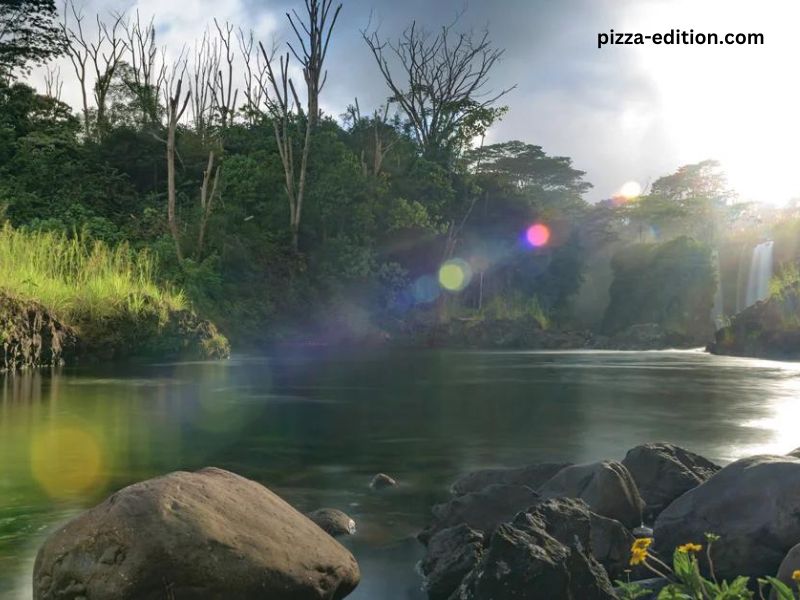The Garden of Eden has captivated the imagination of theologians, scholars, and believers for centuries. This fabled paradise, described in the Bible as the original home of Adam and Eve, has been a source of intrigue, debate, and wonder. But where exactly was this Garden of Eden located? While the biblical text provides some clues, the exact location remains one of the greatest mysteries in religious history. This article delves into the various theories and interpretations that have been proposed over the years, examining historical, geographical, and theological perspectives to explore the possible locations of the Garden of Eden.
The Biblical Description of Eden
The primary source for the Garden of Eden is the Book of Genesis in the Bible. According to Genesis 2:8-14, the Garden was located in the eastern part of a region called Eden. The text also mentions four rivers flowing from a single source to water the Garden. These rivers are named as the Pishon, Gihon, Tigris, and Euphrates. The mention of these rivers has been a key factor in many attempts to locate Eden.
The passage reads:
“Now the Lord God had planted a garden in the east, in Eden; and there he put the man he had formed. The Lord God made all kinds of trees grow out of the ground—trees that were pleasing to the eye and good for food. In the middle of the garden were the tree of life and the tree of the knowledge of good and evil. A river watering the garden flowed from Eden; from there it was separated into four headwaters. The name of the first is the Pishon; it winds through the entire land of Havilah, where there is gold. The gold of that land is good; aromatic resin and onyx are also there. The name of the second river is the Gihon; it winds through the entire land of Cush. The name of the third river is the Tigris; it runs along the east side of Ashur. And the fourth river is the Euphrates.”
This passage provides the most detailed description of Eden’s geography, but it is also quite vague and symbolic, leaving much room for interpretation.
The Mesopotamian Hypothesis
One of the most popular theories places the Garden of Eden in the region known as Mesopotamia, which is modern-day Iraq. This theory is based on the mention of the Tigris and Euphrates rivers, both of which are real rivers that flow through this region. Mesopotamia, often referred to as the “Cradle of Civilization,” is where some of the earliest known human civilizations, such as Sumer and Akkad, emerged.
Proponents of the Mesopotamian hypothesis argue that the descriptions of the rivers and the fertile land align well with what is known about the geography of ancient Mesopotamia. The region between the Tigris and Euphrates rivers, known as the “Fertile Crescent,” was indeed lush and abundant, which fits the description of a paradisiacal garden. Additionally, the idea of Eden being in the east could correspond to the fact that Mesopotamia lies to the east of Israel, where the Bible was written.
However, there are issues with this theory. The other two rivers mentioned, the Pishon and Gihon, have not been definitively identified with any known rivers in Mesopotamia or elsewhere. Some scholars suggest that these rivers could be symbolic or represent rivers that have since dried up or changed course, but this remains speculative.
The Persian Gulf Theory
Another theory suggests that the Garden of Eden was located at the northern end of the Persian Gulf, where the Tigris and Euphrates rivers meet and flow into the Gulf. This area, now submerged under water, may have been a fertile and lush region during the time when Eden is believed to have existed. This theory is supported by the idea that rising sea levels at the end of the last Ice Age could have submerged the Garden, leaving behind only the memories preserved in ancient texts.
Proponents of this theory point to underwater archaeology that has revealed the remains of ancient settlements and riverbeds in the Persian Gulf region, suggesting that this area was once much more hospitable to life than it is today. If the Garden of Eden was located here, it would explain why no trace of it has been found on land.
However, this theory also faces challenges. The identification of the Pishon and Gihon rivers remains problematic, and the idea that a lush, fertile garden could have existed in what is now the harsh, arid environment of the Middle East is difficult to reconcile with the current geography.
The Armenian Highlands Theory
Some scholars propose that the Garden of Eden was located in the Armenian Highlands, a region that includes parts of modern-day Armenia, eastern Turkey, and western Iran. This theory is based on the idea that the headwaters of the Tigris and Euphrates rivers are located in this region, and that the Pishon and Gihon could correspond to rivers that no longer exist or that have been renamed.
The Armenian Highlands are known for their rugged, mountainous terrain, which could explain why the Garden was said to be located “in the east” and why it was so difficult to reach after Adam and Eve were expelled. Additionally, this region is rich in mineral resources, including gold, which aligns with the description of the land of Havilah mentioned in the Genesis account.
However, the Armenian Highlands theory is not without its critics. The region is far from the traditional locations associated with Eden, and the identification of the Pishon and Gihon rivers remains speculative. Furthermore, the idea that Eden was located in a mountainous region seems to contradict the biblical description of a lush, fertile garden.
The African Hypothesis
A less conventional theory suggests that the Garden of Eden was located in Africa, specifically in the region of the Nile River or even further south. This theory is based on the identification of the Gihon river with the Nile, as the Bible mentions that the Gihon “winds through the entire land of Cush,” which is often associated with ancient Nubia or modern-day Sudan.
Some proponents of the African hypothesis argue that the Pishon river could be identified with a now-dry riverbed in the Arabian Peninsula, which would have flowed into the Red Sea. This would place Eden in a region that was once much more fertile than it is today, possibly near the Horn of Africa.
This theory is intriguing but faces significant challenges. The Tigris and Euphrates rivers are far from the Nile, making it difficult to reconcile this theory with the biblical description of Eden as a place where all four rivers originated from a single source. Additionally, the identification of the Pishon and Gihon rivers remains speculative.
Symbolic Interpretations of Eden
While many theories attempt to locate the Garden of Eden in a specific geographical location, some scholars and theologians suggest that Eden should be understood symbolically rather than literally. According to this view, the Garden of Eden is not a physical place that can be found on a map but rather a metaphorical representation of a state of innocence, harmony, and closeness to God.
In this interpretation, the rivers, trees, and other elements of the Garden are seen as symbolic of spiritual truths rather than physical realities. The idea of Eden as a paradise lost serves as a powerful metaphor for the human condition, emphasizing themes of fall, exile, and the longing for a return to a state of purity and communion with the divine.
This symbolic interpretation has gained traction in some theological circles, particularly among those who view the early chapters of Genesis as mythological or allegorical rather than historical. However, it also raises questions about the relationship between faith and history and the extent to which religious texts should be understood literally.
Conclusion
The question of where the Garden of Eden was located remains one of the most enduring mysteries in religious history. Despite the many theories and interpretations that have been proposed, no definitive answer has been found. The Bible provides some tantalizing clues, but they are vague and open to interpretation, leaving much room for speculation.
Whether Eden was located in Mesopotamia, the Persian Gulf, the Armenian Highlands, Africa, or somewhere else entirely, or whether it is a symbolic rather than a literal place, remains a matter of debate. What is clear is that the story of the Garden of Eden continues to resonate with people around the world, serving as a powerful symbol of paradise lost and the enduring human longing for a return to innocence and harmony.
In the end, the search for Eden may be as much about the journey as it is about the destination. The various theories and interpretations reflect humanity’s deep-seated desire to connect with the divine and to understand our origins. Whether or not the true location of Eden is ever discovered, the story will continue to inspire and challenge us as we seek to understand our place in the world.




